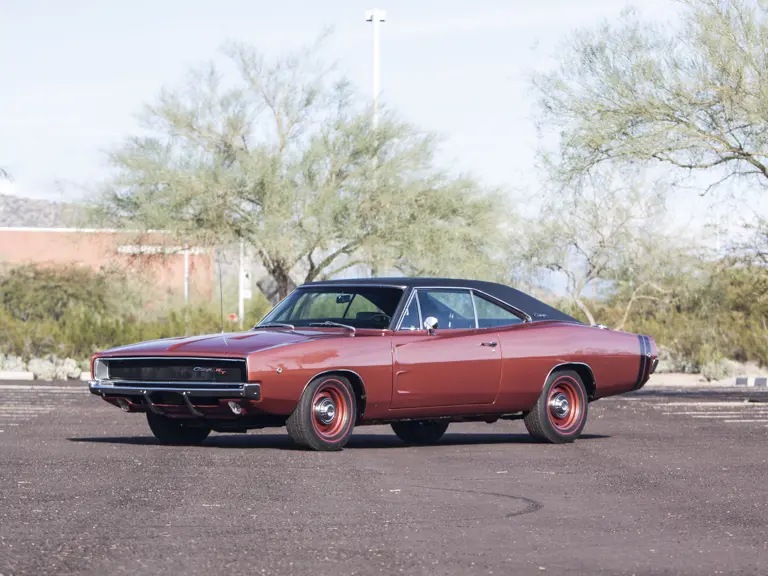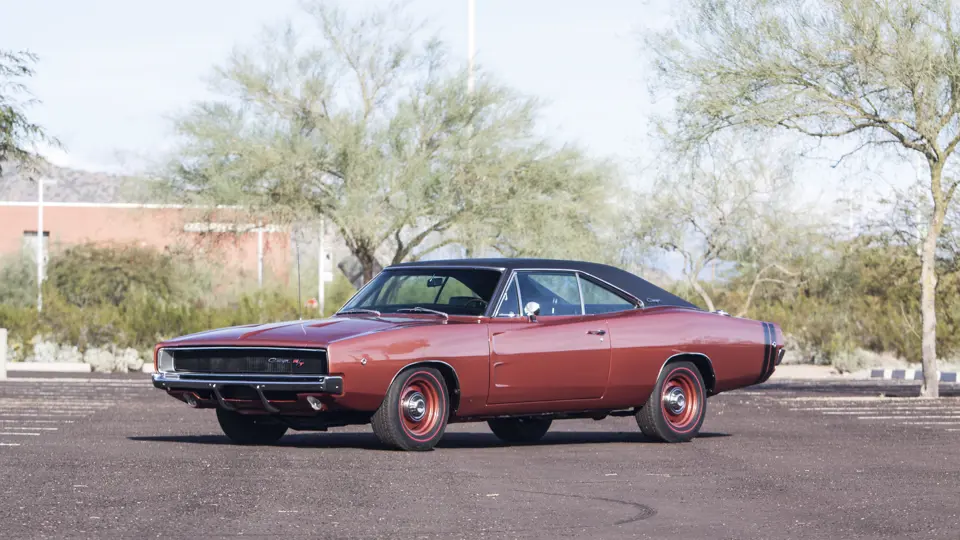 | Fort Lauderdale, Florida
| Fort Lauderdale, Florida
For years many automotive magazines and enthusiasts have offered the opinion that the 426 street Hemi was offered to the public to meet the minimum production requirements by NASCAR and associated auto racing governing bodies. This is true in part, but other factors played in the decision to turn the 426 Hemi loose on the streets of America.
In the early days, Chrysler looked into offering the 426 Hemi in passenger cars during the 300 Hemi program. To make the idea of the 426 viable, expensive steps in the engine’s manufacture were to be scrubbed and modifications made to refine the powerful engine for street use. The proposal went no further.
The idea of putting the 426 Hemi in street cars was not as outrageous an idea in this time-frame as it was, after all, the performance era, and every car manufacturer was offering large displacement, high performance engines in their passenger lines; some of these units featuring multiple carburetor setups, like with this car. Chrysler had made Hemi-head engines available in their cars before and were touted for their great performance characteristics in comparison to General Motors and Ford. For 1964 Chrysler offered a new 365 horsepower, 426-cid Wedge in its Dodge and Plymouth models, while the 426 race Hemi was presented in Dodge and Plymouth models for sanctioned drag racing endeavors.
With this background, it is easy to see the Chrysler decision to moderately detune the 426 race Hemi and make it an option in select models. Along the way, the unit became a legend and the 426 street Hemi ended up becoming, many would say, the most desirable high performance engine ever bolted into a passenger car. It is suggested that they ruled the road from 1966 to 1971.
The 1968 model year changes included a new design for the Dodge Charger. Included among these were a new hidden headlight grille, more curvaceous body, recessed backlight, refined tail and less brightwork. The rear quarters were swollen a bit for that musclecar styling influence, with evidence of competition themes. The platform also went from a fastback body style to a design considered a semi-fastback style. Along with the new design was a massive increase in sales rising from 15,788 the previous year to 92,590 produced in 1968. According to general information attributed to Mopar expert Galen Govier, only 467 Charger Hardtop Coupes received the 426 Hemi engine such as seen in this car. One additional Charger 500 prototype also received this unit. From the 467 total, this car is one of only 211 that received the four-speed manual transmission.
It is reported that 17,665 Chargers were optioned with the R/T package that included the "Scat Pack" bumblebee stripes on the rear end. For the hardcore Mopar fans and drag racers the Hemi still remained the engine of choice. The full line-up of engine options was topped by the Code-J 426-cid Hemi which produced 425 horsepower, and is the powerplant of choice in this fantastic machine.
For $3,506, the R/T came with the 440-cid, 375-hp four-barrel Magnum V-8 as its standard. Heavy-duty brakes, R/T handling package and F70 X l4 tires were among these standards also. The only engine option was the immense 426 Hemi, at $605. Chrysler strengthened it for '68, with a somewhat longer-duration cam, new valve springs, and modifications that reduced oil consumption. It was still thought to be underrated at its stated 425-hp, but as Car and Driver magazine enthused, "There just isn't more honest horsepower available off the showroom floor than you get from this bright orange monster."
Finished in Code MM1 Bronze Metallic with black interior and black bumblebee rear stripes, this frame-off restored R/T example also has a black vinyl roof and color-keyed wheels with “dog dish” factory hubcaps and redline tires. The restoration has just recently been completed and only 150 miles are reported to have been driven since finishing the project.
Along with the famous Hemi V-8 engine, this car has the desirable four-speed manual transmission, which has a Pistol Grip shift handle added. Disc brakes are also installed on the Charger. During the course of the restoration, the owner decided to leave off the undercoating and leave body-color paint visible so the integrity of the floor can be readily seen and examined. A wood-rimmed steering wheel, AM radio and power steering are additional features, as is the all-important factory Broadcast Sheet.
Additionally, this Hemi Charger has been physically inspected by Mopar expert David Wise. Included with the sale of the car is the 22 page report compiled by Mr. Wise. Please contact your Auctions America Specialist for additional details. Noted Mopar expert Galen Govier has also assembled his respected report on the car's VIN breakdown.
These are very special American musclecars that can make one just a bit uneasy as its engine runs, even if the car is standing still. It was the number one ticket in 1968 to contract a case of Dodge Fever.





